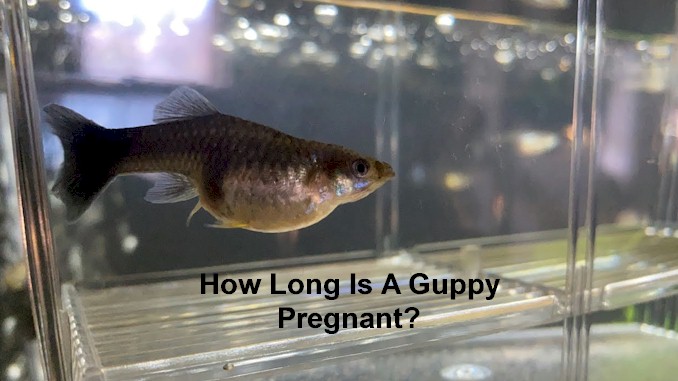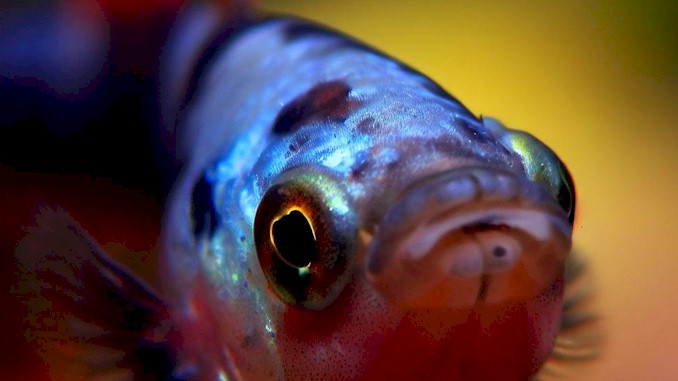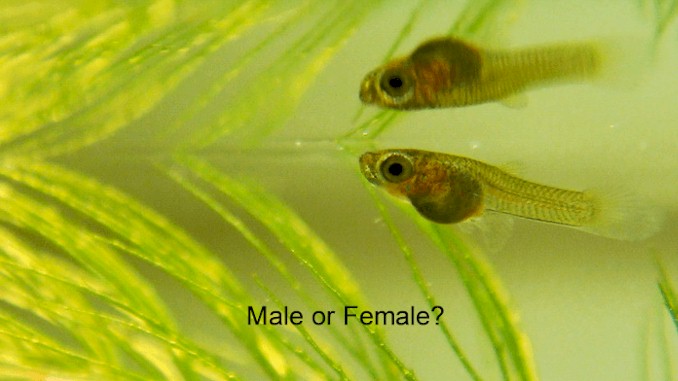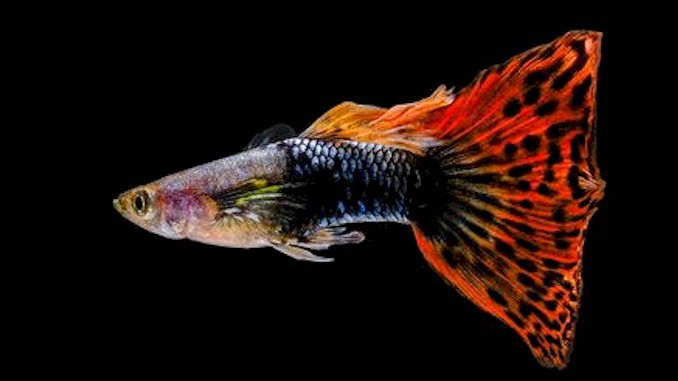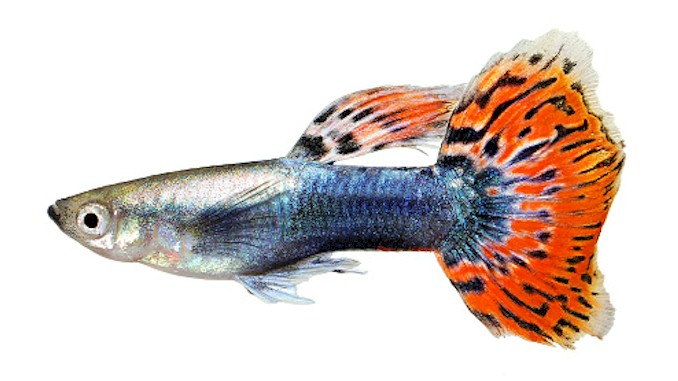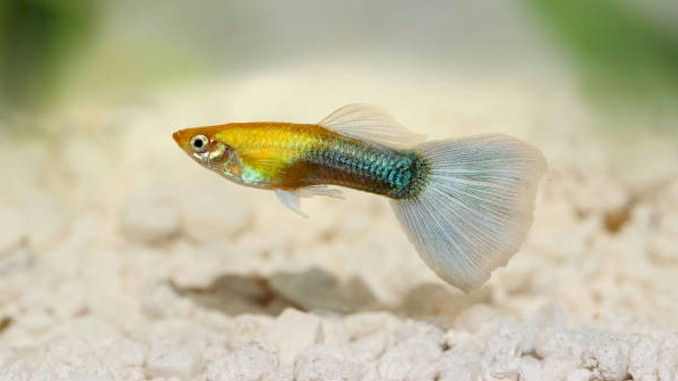The Big Wait: How Long is a Guppy Pregnant
Raising pregnant guppy fish can be an exciting and rewarding experience. I still remember the thrill I felt when I first saw a swollen belly on my pregnant guppy fish and all the typical signs of a healthy pregnancy. However, as a beginner, I wasn’t sure when the fish would give birth. Thankfully, with time and experience, I gained some valuable knowledge about breeding guppies. Those are what I am going to share with you in the following sections:
Guppies gestation lasts 21-31 days in general , with an average of 22-26 days. It would shorter if the aquarium conditions are optimal. High temps can accelerate birth, but increase risk of deformities. Balanced aquarium conditions are key to healthy offspring.
Now that you know how long is a guppy pregnant. Guppy pregnancy and birth are fascinating processes that require some special attention and care from you as the owner. In the following paragraphs, I will share with you some useful tips on how to identify a pregnant guppy, how to recognize the signs of labor, etc. By following these steps, you will ensure a healthy and successful guppy breeding experience. So keep reading and learn more about your amazing guppy fish!
How Long Is A Guppy Pregnant?


The gestation period is the time between fertilization and birth. For guppies, this period usually ranges from 21 to 31 days , with an average of 22 to 26 days. However, this is not a fixed rule, and some guppies may take longer or shorter than others to give birth, because there are many factors that can affect the length of guppy pregnancy.
Let’s go through each of the factors that influence how long are guppies pregnant one by one:
1. Water Temperature
The main factor is water temperature. Guppies are tropical fish that prefer warm water conditions. The warmer the water, the faster the embryos develop inside the female guppy’s womb. Conversely, the colder the water, the slower the development and the longer the pregnancy.
According to some sources, the optimum water temperature for guppy pregnancy is around 76°F (24°C). If you increase or decrease this temperature by a few degrees, you may notice a difference in how long your guppy stays pregnant.
For example, if you raise the temperature to 82°F (28°C), you may expect your guppy to give birth around 21 days after mating. However, this may also increase the risk of having deformed babies due to rapid development2. On the other hand, if you lower the temperature to 72°F (22°C), you may expect your guppy to give birth around 35 days after mating. However, this may also increase the risk of having stillborn babies due to slow development.
Therefore, it is important to keep a stable and suitable water temperature for your pregnant guppy. You can use a heater and a thermometer to monitor and adjust your aquarium’s temperature accordingly.
2. Your Pregnant Guppy’s Size and Age
Another factor that affects how long a guppy stays pregnant is her size and age. Generally speaking, larger and older females tend to have shorter pregnancies than smaller and younger ones. This is because larger females have more space in their wombs for their babies to grow faster. Older females also have more experience in breeding and giving birth than younger ones.
However, size and age are not always reliable indicators of pregnancy length. Some small or young females may surprise you with early deliveries while some large or old females may take longer than expected.
3. Your Pregnant Guppy’s Diet and Health
A third factor is her diet and health. A well-fed and healthy female will have a smoother pregnancy than a malnourished or sick one. A good diet will provide enough nutrients for both mother and babies while preventing diseases or infections that could harm them.
You should feed your pregnant guppy high-quality food that contains protein, vitamins, minerals, fiber and omega-3 fatty acids. You can use flakes or pellets as staple food but also supplement with live or frozen foods such as brine shrimp or bloodworms once or twice a week[. You should also avoid overfeeding your pregnant guppy as this could cause bloating or constipation which could complicate her delivery.
4. Your Pregnant Guppy’s Stress Level
A fourth factor is her stress level. Stress can have negative effects on both mother and babies’ health and development. Stress can be caused by various factors such as poor water quality, crowded tank conditions, aggressive tank mates, loud noises, bright lights, or sudden changes in environment. Stress can make your pregnant guppy lose her appetite, hide more often, become more susceptible to diseases, or even reabsorb her babies inside her body. Therefore, you should try to minimize stress for your pregnant guppy by providing clean water, enough space, peaceful companions, and a calm atmosphere.
5. The Genetics
A fifth factor is her genetics. Some strains of guppies may have inherited traits that influence their gestation period. For example, some fancy varieties such as Endlers or Moscow blues may have longer pregnancies than wild-type varieties such as common or feeder guppies. This could be due to selective breeding for certain traits such as coloration or body shape which could affect their reproductive system. However, genetics are not always predictable and you may find variations within the same strain or even the same litter.
As a result, giving an accurate answer regarding how long a guppy is pregnant is impossible. The easiest approach to determine your guppy’s gestation length is to watch her physical and behavioral changes and compare them to the usual range of 21 to 31 days. You may also keep track of when she mated with a guy and make a note of it on your calendar. But, you should be ready for any surprises and to greet your new young guppies whenever they arrive.
How To Tell If A Guppy Is Pregnant
If you have a mixed tank of male and female guppies, chances are you will have some pregnant females sooner or later. Guppies are very prolific breeders and can become pregnant as early as one month old. However, not every female guppy that looks big or bloated is necessarily pregnant. There are other health conditions that can cause similar symptoms, such as dropsy or constipation. Therefore, it is important to know how to tell if a guppy is pregnant and not sick.
You can detect if a guppy is pregnant by examining both her physical appearance and her behavior. In this part, I’ll go through the signs to look for and how to tell whether your guppy is pregnant.
The emergence of a black patch near your guppy’s anal vent is the first sign that she is pregnant. This is known as the gravid spot, and it shows that embryos are forming within her womb. Depending on the strain of your guppy, the gravid mark may be orange or black in hue. The gravid mark will become darker and bigger as the pregnancy proceeds and the kids grow. You may even notice little spots inside the gravid area that are the young guppies’ eyes.
An increase in tummy size is the second sign that your guppy is pregnant. As she bears more offspring, your female guppy will get rounder and fuller. She may also develop a boxy appearance towards her tail, indicating that she is on the verge of giving birth. The number of kids a guppy may have each litter ranges from 10 to 200, depending on her size and genetics. As a result, you should expect your pregnant guppy to expand greatly throughout her pregnancy.
A change in behavior is the third sign that your guppy is pregnant. Your female guppy may become more reserved and bashful than normal. She may hide under plants or decorations more frequently, or she may remain at the bottom of the tank. She can also lose her appetite or refuse to eat at all. These behavioral changes are normal for a pregnant guppy and signal that she is getting ready to give birth.
Body contractions are the fourth sign that your guppy is pregnant. This symptom appears when your guppy is in labor and about to give birth. When she pushes out her kids, your female guppy’s body will tense and relax repeatedly. Depending on how many kids mother has, this procedure can take anything from a few minutes to many hours. At this time, you should keep a careful eye on your pregnant guppy and make sure she has enough room and solitude to give birth.
These are some of the most common signs that indicate if a guppy is pregnant or not. But, you should be aware that some females may not exhibit any evident symptoms until they suddenly give birth. As a result, keep track of when your female mated with a male and mark your calendar accordingly. Prepare for any surprises by having a separate breeding tank ready for your new young guppies whenever they come.
How To Recognize The Signs Of Labor In Guppies
If you have confirmed that your guppy is pregnant, you may be wondering how to recognize the signs of labor and when to expect your guppy to give birth. Knowing these signs can help you prepare for the arrival of your new baby guppies and provide them with a safe and comfortable environment.
Guppies’ labor signals are comparable to those of other livebearing fish. Physical alterations, behavioral changes, and bodily contractions are among them. Nevertheless, not every pregnant guppy will exhibit all of these symptoms at the same time. As a result, it is critical to keep a watchful eye on your pregnant guppy during her gestation period.
A change in belly shape is the earliest sign of labor in guppies. When she carries additional babies inside her, your pregnant guppy will grow incredibly huge and spherical. But, as the due date approaches, her tummy will become more square-shaped or boxy. This is because her kids will migrate to her pelvic region and prepare to emerge. Her gravid spot may also become darker and bigger as the kids grow. You may even notice little spots inside the gravid area that are the young guppies’ eyes.
A change in behavior is the second sign of labor in guppies. Your pregnant guppy may grow restless and swim around the tank irregularly. She may also separate herself from other fish or seek for a peaceful location to give birth. She may hide under plants or decorations or remain at the tank’s bottom. She can also lose her appetite or refuse to eat at all. These behavioral changes are normal for a pregnant guppy and signal that she is getting ready to give birth.
Body contractions are the third sign of labor in guppies. This sign appears when your guppy is in labor and about to give birth. When she pushes out her kids, your female guppy’s body will tense and relax repeatedly. Depending on how many kids the mother has, this procedure can take anything from a few minutes to many hours. At this time, you should keep a careful eye on your pregnant guppy and make sure she has enough room and privacy to give birth.
These are some of the most typical signs of whether or not a guppy is in labor. You should be warned, too, that some females could not exhibit any apparent signs until they suddenly give birth. It is always always recommended to keep note of the day that your female mated with a male and mark your calendar appropriately. Having a separate breeding tank ready for your new young guppies whenever they come can help you be ready for any surprises as well.
How To Tell How Far Along A Pregnant Guppy Is
When you have a pregnant guppy in your tank, you may be curious to know how far along she is and when she will give birth. Certainly, knowing how far along a pregnant guppy is can help you prepare for the arrival of your new baby guppies and provide them with a safe and comfortable environment.
However, telling how far along a pregnant guppy is can be tricky, as different factors can affect the length of guppy pregnancy. As I mentioned before, the gestation period for guppies usually ranges from 21 to 31 days , with an average of 22 to 26 days. However, this can vary depending on water temperature, female size and age, diet and health, stress level, and genetics.
Therefore, it is not possible to give an exact answer to how far along a pregnant guppy is. The best way to estimate the gestation period of your guppy is to observe her physical and behavioral changes and compare them with the average range of 21 to 31 days. You can also keep track of when she mated with a male and mark your calendar accordingly.
Now , I going to tell you what signs you should look for, and how to tell how far along your pregnant guppy is.
1. Appearance Of Gravid Spot
The first sign you should check is the appearance of her gravid spot. The gravid spot is a dark spot near her anal vent that indicates that there are embryos developing inside her womb. The gravid spot may be orange or black in color, depending on the variety of your guppy. As the pregnancy progresses, the gravid spot will become darker and larger as the babies grow. You may even see little dots inside the gravid spot, which actually are the eyes of the baby guppies.
The gravid spot can help you estimate how far along a pregnant guppy is by comparing it with some general guidelines. Here are some approximate stages of pregnancy based on the gravid spot:
- Week 1: The gravid spot appears as a small orange or black dot near the anal vent.
- Week 2: The gravid spot becomes slightly larger and darker.
- Week 3: The gravid spot becomes noticeably larger and darker. It may change its shape or position slightly.
- Week 4: The gravid spot becomes very large and dark. You may see little dots inside it which are the eyes of the baby guppies.
However, these guidelines are not always accurate and may vary depending on your individual guppy. Therefore, you should use them as rough estimates only and not rely on them completely.
2. Belly Size
The second sign you’re going to check is an increase in belly size. Your pregnant guppy will start to look rounder and fuller as she carries more babies inside her. However, as she gets closer to delivery time, her belly will become more square-shaped or boxy. This is because her babies will move towards her pelvic area and get ready to come out. You may also notice that her scales become more stretched or protrude slightly.
The belly size can help you estimate how far along a pregnant guppy is by comparing it with some general guidelines. Here are some approximate stages of pregnancy based on the belly size:
- Week 1: The belly appears slightly rounder than normal but not very noticeable.
- Week 2: The belly becomes more rounded and noticeable but still small compared to other parts of the body.
- Week 3: The belly becomes significantly larger and starts to form a boxy shape near the tail.
- Week 4: The belly becomes very large and boxy shaped. It may appear disproportionate compared to other parts of the body.
Remember, these guidelines are not always accurate, and may vary depending on your individual guppy. Therefore, as always, you should use them as rough estimates only and not rely on them completely.
3. A Change in Behavior
The third sign you should check is a change in behavior. Your pregnant guppy may become more shy and reclusive than usual. She may hide more often behind plants or decorations or stay at the bottom of the tank. She may also lose her appetite or refuse to eat altogether. These behavioral changes are normal for a pregnant guppy and they indicate that she is preparing for delivery.
4. Body Contractions
The fourth sign you should check is body contractions. This sign occurs when your guppy is in labor and ready to give birth. You will notice that your female guppy’s body will tighten and relax repeatedly as she pushes out her babies. This process can last from a few minutes to several hours depending on how many babies she has. You should monitor your pregnant guppy closely during this time and make sure she has enough space and privacy for delivery.
So if you pay close attention to all these four signs and based on the information you get, compared to the experiences that were collected from other guppies’ owners, you can tell how far along your pregnant guppy is.
However, you should also be aware that some females may not show any obvious signs until they give birth unexpectedly. Therefore, it is always advisable to keep track of when your female mated with a male and mark your calendar accordingly. You should also be prepared for any surprises and have a separate breeding tank ready for your new baby guppies whenever they arrive.
How Many Babies Does A Guppy Have The First Time?
If you have a pregnant guppy in your tank, you may be curious to know how many babies she will have the first time. Knowing how many babies a guppy can have can help you prepare for the arrival of your new baby guppies and provide them with a safe and comfortable environment.
Though, telling how many babies a guppy can have is not easy, as different factors can affect the number of offspring. These factors include female size and age, diet and health, water temperature, genetics, and stress level.
Therefore, it is not possible to give an exact answer to how many babies a guppy can have. The best way to estimate the number of offspring is to observe your pregnant guppy closely and regularly during her gestation period.
Though, you still can take into account some factors that influences the number of offspring to guess how many babies your guppy can have:
1. Size and Age of Your Pregnant Guppy
The first factor is the size and age of the female. In general, larger and older females have more infants than smaller and younger females. This is due to bigger mothers having more womb capacity for their infants to grow faster. In addition, older females have more experience breeding and giving birth than younger ones.
However, size and age are not always reliable indicators of the number of offspring. Some small or young females may surprise you with large litters while some large or old females may have fewer babies than expected.
2. Diet and Health of Your Pregnant Guppy
The second factor is diet and health. A well-fed and healthy female will have more babies than a malnourished or sick one. A good diet will provide enough nutrients for both mother and babies while preventing diseases or infections that could harm them.
You should feed your pregnant guppy high-quality food that contains protein, vitamins, minerals, fiber and omega-3 fatty acids. You can use flakes or pellets as staple food but also supplement with live or frozen foods such as brine shrimp or bloodworms once or twice a week. You should also avoid overfeeding your pregnant guppy as this could cause bloating or constipation which could complicate her delivery.
3. Water Temperature
The third factor is water temperature. Guppies are tropical fish that prefer warm water conditions. The warmer the water, the faster the embryos develop inside the female guppy’s womb.
Conversely, the colder the water, the slower the development and the fewer the babies. According to some sources , the optimum water temperature for guppy pregnancy is around 76°F (24°C). If you increase or decrease this temperature by a few degrees, you may notice a difference in how many babies your guppy will have.
4. Genetics
The fourth factor is genetics. Some strains of guppies may have inherited traits that affect their fertility and fecundity. For example, some fancy varieties such as Endlers or Moscow blues may have more babies than wild-type varieties such as common or feeder guppies. This could be due to selective breeding for certain traits such as coloration or body shape which could affect their reproductive system.
However, genetics are not always predictable and you may find variations within the same strain or even the same litter.
5. Stress Level
The fifth factor is stress level. Stress can have negative effects on both mother and babies’ health and development. Stress can be caused by various factors such as poor water quality, crowded tank conditions, aggressive tank mates, loud noises, bright lights, or sudden changes in environment.
Stress can make your pregnant guppy lose her appetite, hide more often, become more susceptible to diseases, or even reabsorb her babies inside her body. Therefore, you should try to minimize stress for your pregnant guppy by providing clean water, enough space, peaceful companions, and a calm atmosphere.
These are some of the elements that impact a guppy’s ability to produce children. You should be aware, however, that these elements are not always consistent and may change based on your specific guppy and her environment. As a result, it is impossible to say exactly how many babies a guppy can have.
The best way to estimate how many babies a guppy can have is to observe your pregnant guppy closely and regularly during her gestation period. You may also use an aquarium net or a breeding box to separate your pregnant guppy from other fish and monitor her delivery process.
Based on experiences that I learned from other guppies owners, here are some approximate numbers of offspring based on female size:
- Small female: 10-20 babies
- Medium female: 20-40 babies
- Large female: 40-60 babies
However, these numbers are only averages and may vary depending on other factors mentioned above. Therefore, you should be prepared for any surprises and have a separate breeding tank ready for your new baby guppies whenever they arrive.
How Often Can Guppies Get Pregnant?
Guppies are live-bearing fish, which means that they give birth to live fry instead of laying eggs. Female guppies can get pregnant multiple times throughout their lives, and they are known for their high reproductive capacity.
Generally, in ideal conditions, female guppies can become pregnant every 4 to 6 weeks, and each pregnancy can result in the birth of 20 to 40 fry or even more.
In case you want to know more about it. I am going to share with you what I have learned about how often guppies can get pregnant and what factors affect their breeding cycle.
1. Your Guppy’s Sexual Maturity
The first factor is their sexual maturity. Guppies reach sexual maturity at a very young age, usually between 1 to 3 months old. This means that they can start breeding as soon as they are introduced into a tank with males and females. However, some guppies may mature faster or slower than others depending on their genetics and environment.
2. Your Guppies’ Mating Behavior
The second factor is their mating behavior. Guppies are not shy about mating and do not require any special conditions or triggers to initiate the process. Males will constantly chase females around the tank and try to inseminate them with their gonopodium, a modified anal fin that transfers sperm packets into the female’s anal vent.
Females can store these sperm packets for several months and use them to fertilize multiple batches of eggs without needing to mate again. This means that guppies can get pregnant even if there are no males present in the tank.
3. The Gestation Period
The third factor is their gestation period. The gestation period is the time between fertilization and birth. For guppies, this period usually ranges from 21 to 31 days, with an average of 22 to 26 days. However, this is not a fixed rule, and some guppies may take longer or shorter than others to give birth depending on water temperature, female size and age, diet and health, stress level, and genetics.
4. The Litter Size
The fourth factor is the size of their litter. The litter size is the number of fry produced by a female at one time. This number can range from 10 to 200 every litter for guppies, depending on female size and genetics.
Larger females tend to have more babies than smaller ones because they have more space in their wombs for their babies to grow faster. Some strains of guppies may also have more babies than others due to selective breeding for certain traits, such as coloration or body shape, which could affect their reproductive system. However, litter size is not always consistent and may vary within the same strain or even the same litter.
Therefore, how often guppies can get pregnant depends on several factors, such as their sexual maturity, mating behavior, gestation period, and litter size. Generally speaking, guppies can get pregnant about once every 4 to 6 weeks under optimal conditions.
Even so, this might vary based on your guppy and her surroundings. As a result, it is critical to properly watch your guppy during her reproductive cycle and provide her with a suitable habitat for spawning and nurturing her fry.
At What Age Do Guppies Start Breeding?


Breeding guppies is a natural process that doesn’t require any special efforts. When you have a male and female guppy in the same tank, they will usually mate within a few days. However, it’s important to note that guppies need to reach sexual maturity before they can breed, just like any other animal.
Typically, guppies become sexually active at around six weeks of age, but it can take up to five months before they start breeding. If you’ve had sexually mature guppies of opposite sexes living together for a few days, there’s a good chance that the female is pregnant.
It’s worth noting that guppies have a high reproductive capacity and can give birth to multiple batches of fry throughout their lifetime. However, constant breeding can be stressful for the female and can lead to health problems, so it’s important to provide periods of rest between pregnancies. Additionally, make sure to provide adequate space, food, and filtration in the tank to support a large population of guppies if you plan on breeding them.
How To Set Up A Breeding Tank For Pregnant Guppies
Setting up a breeding tank for pregnant guppies is essential to ensure a safe and healthy environment for the fry to grow and thrive. Here are the steps to follow when setting up a breeding tank for pregnant guppies:
- Choose the right tank size: A breeding tank for guppies should be at least 10 gallons in size to provide enough space for the fry to grow.
- Install a filter: A filter is necessary to keep the water clean and maintain good water quality in the tank. A sponge filter is recommended as it provides gentle water flow and won’t suck up the fry.
- Add substrate: A layer of fine-grained substrate, such as sand or gravel, is necessary for guppies to lay their eggs.
- Provide hiding spots: Pregnant guppies need a place to hide, so adding plants, rocks, or decorations to the tank will create hiding spots for them.
- Adjust the temperature: Guppies prefer warmer water, so adjust the temperature to around 78-80°F (25-26°C) for breeding.
- Add lighting: Provide adequate lighting for the plants and fry to grow, but avoid using bright lights that can stress the pregnant guppies.
- Feed high-quality food: Provide a balanced diet of high-quality food to pregnant guppies, including live or frozen foods, to ensure healthy fry.
- Monitor water parameters: Check the water parameters regularly and do partial water changes if needed to maintain good water quality.
You can make a suitable and healthy breeding tank for pregnant guppies by implementing these procedures. Remember to offer appropriate care and attention to the fry to guarantee good breeding and growth.
Related Questions:
Why has my guppy been pregnant forever?
As I talked in ‘Your Guppies Mating Behavior”, Females can store these sperm packets for several months and use them to fertilize multiple batches of eggs without needing to mate again. This means that guppies can get pregnant even if there are no males present in the tank.
When to separate pregnant guppy?
You should separate the pregnant guppy when they are about to give birth. Usually, a female guppy will be pregnant for one month before giving birth to the fry. Consider separating the pregnant guppy and placing them in a breeding box when they reach three weeks of pregnancy.
To tell if your guppy is about to give birth, you can look at the gravid spot, which is a dark spot near the anal fin that indicates the presence of embryos. The gravid spot will be enlarged and darker when they are ready to release the fry. You can also observe the belly size and shape, which will get larger and more boxy as the pregnancy progresses. Additionally, you may notice behavioral changes such as hiding, resting or refusing food.
Make sure not to keep pregnant guppy for more than two weeks in a breeding box as it can make them come under stress, and they can even pass away. Maintain the water temperature between 78-82 °F to ensure the ideal condition for giving birth.

